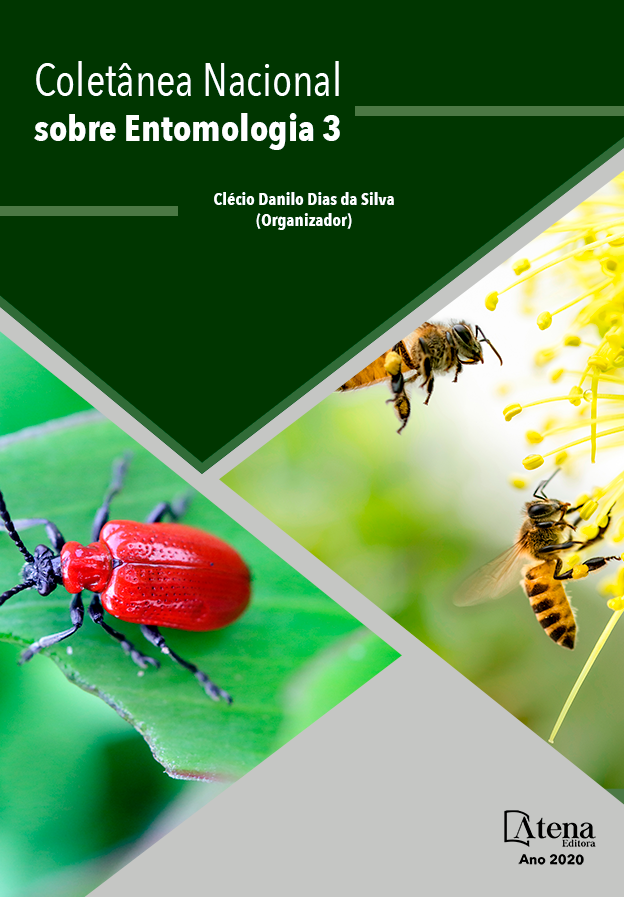
SCOLYTINAE (COLEOPTERA: CURCULIONIDAE) EM TRÊS FRAGMENTOS FLORESTAIS DA REGIÃO DE MOGI GUAÇU, SP
Este trabalho investigou as populações de Scolytinae (Coleoptera) em três fragmentos florestais nativos pertencentes à empresa Chamflora Agrícola Ltda., nos municípios de Mogi Guaçu, Itapira e Martinho Prado Junior, ambos no estado de São Paulo. Foi estudada a composição das espécies de Scolytinae por meio de coletas quinzenais em nove armadilhas etanólicas modelo Carvalho-47, obtendo-se a flutuação para cada espécie nos três fragmentos florestais nativos de diferentes tamanhos, formas e históricos de perturbação. Utilizaram-se os índices faunísticos: freqüência, constância, dominância individual das espécies, riqueza, associação entre as espécies, similaridade ente as comunidades e diversidade. Foram coletadas 38 espécies, onde quatro delas não foram identificadas. As 34 espécies identificadas estão distribuídas em 13 gêneros. Hypothenemus eruditus, Microcortylus minimus, Hypothenemus obscurus, Xyleborus retusus, Cortylus schaufussi e Premnobius cavipennis foram as espécies mais abundantes. Apenas Hypothenemus eruditus foi apontado como constante e dominante nos três fragmentos florestais estudados, tais diferenças, sugerem que a medida que o ambiente sofre alterações, ocorrem mudanças nos padrões de densidade e na composição das espécies. Entretanto, a diversidade de Scolytinae foi maior nos ambientes com maior nível de interferência ambiental.
SCOLYTINAE (COLEOPTERA: CURCULIONIDAE) EM TRÊS FRAGMENTOS FLORESTAIS DA REGIÃO DE MOGI GUAÇU, SP
-
DOI: 10.22533/at.ed.3992001101
-
Palavras-chave: Armadilha etanólica, Coleoptera, Entomologia florestal, Xilófagos
-
Keywords: Ethanolic trap, Coleoptera, Forest Entomology, Xylophagous
-
Abstract:
This work investigated the populations of Scolytinae (Coleoptera) in three pertaining native forest fragments to the company Chamflora Agrícola Ltda., in the municipal district of Mogi Guaçu, Itapira and Martinho Prado Junior, both in the state of São Paulo. Was studied the composition of the species of Scolytinae by means of biweekly collections in nine traps ethanolics model Carvalho-47, getting itself it fluctuation for each species in the three native forest fragments of different sizes, forms and descriptions of disturbance. The faunistic indices had been used: frequency, constancy, individual dominance of the species, wealth, association between the species, similarity being the communities and diversity. 38 species were collected. The 34 identified species are distributed in 13 sorts. Hypothenemus eruditus, cavipennis Microcortylus minimus, Hypothenemus obscurus, Xyleborus retusus, Cortylus schaufussi and Premnobius cavipennis had been the species most abundant. But Hypothenemus eruditus was pointed as constant and dominant in the three studied forest fragments, such differences, suggest that the measure that the environment suffers alterations, occurs changes in the density standards and me the composition of the species. However, the Scolytinae diversity was bigger in environments with bigger level of environment interference.
-
Número de páginas: 15
- Carlos Alberto Monteiro da Silva
- Henrique Trevisan
- Acacio Geraldo de Carvalho
- Thiago Sampaio de Souza


